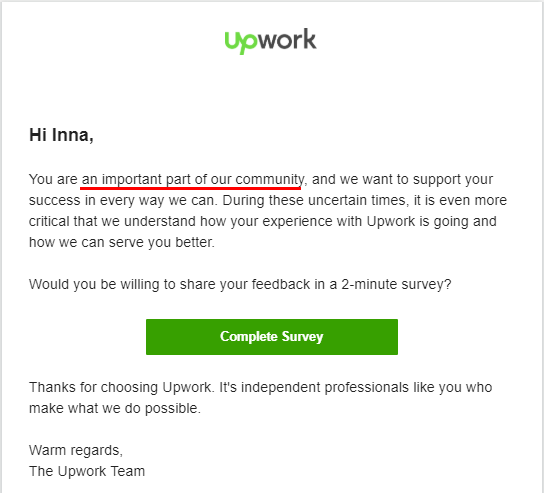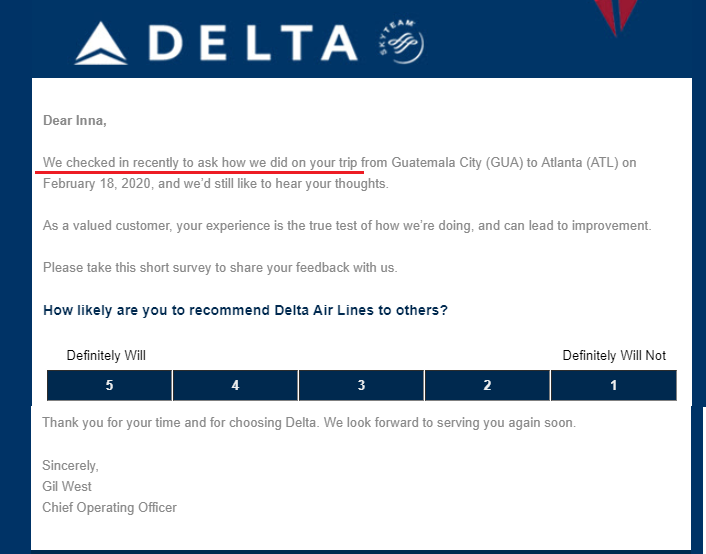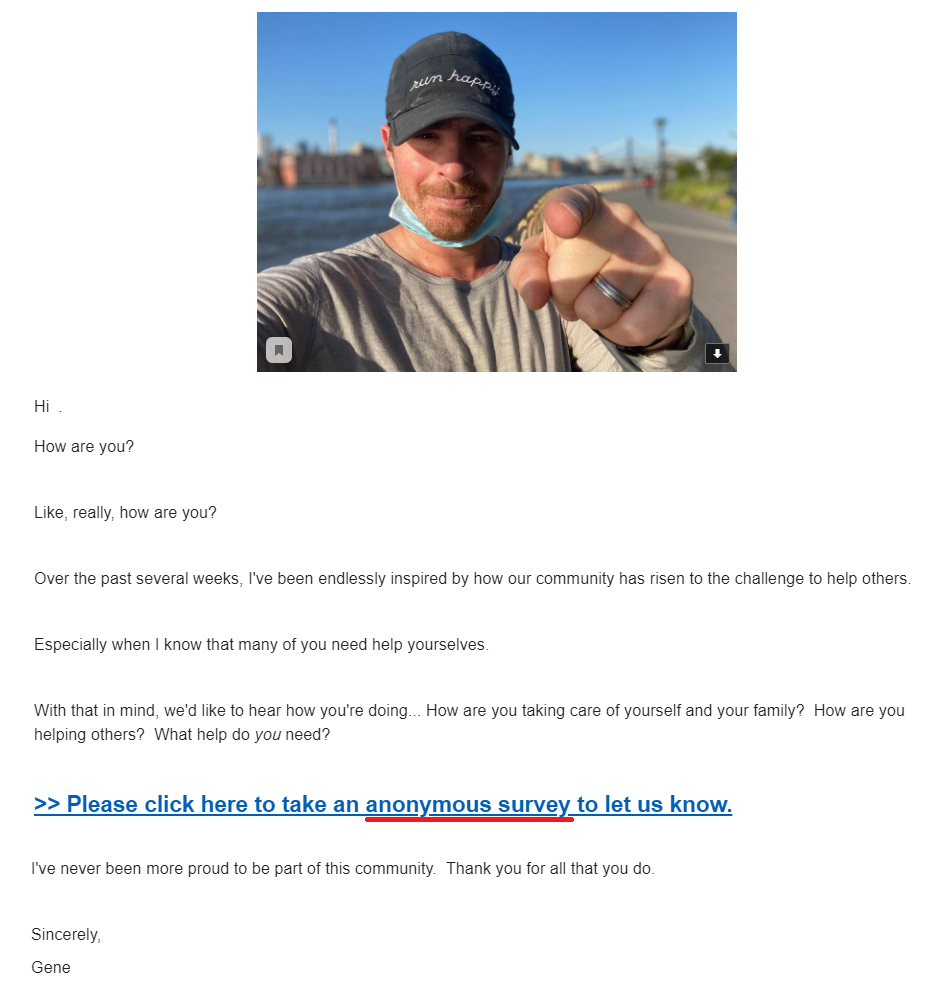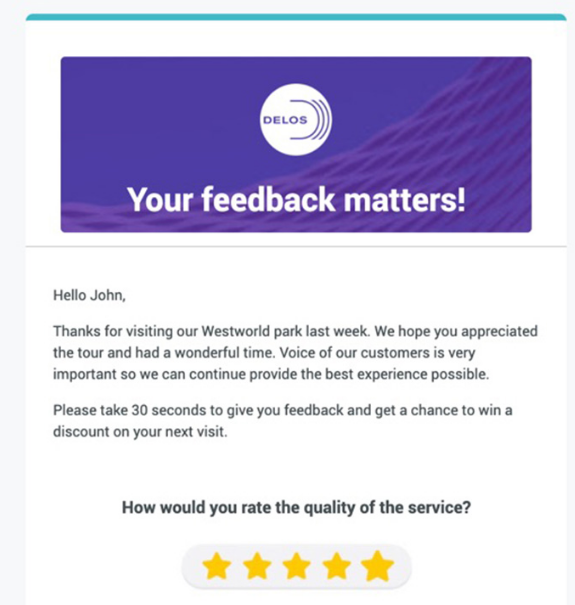Last updated on August 3rd, 2023

Do you invite your customers to take surveys, but don’t receive any feedback? Does it feel like your invitations only irritate the recipients?
No worries! You can fix this problem and boost your direct marketing efforts.
Here, we will talk about how to ask for feedback from your customers. We’ll discuss the most common mistakes and how to fix them. Plus, we’ll show some examples of companies doing this well.
Let’s get started!
 Automate All Your Communications With VipeCloud
Automate All Your Communications With VipeCloud
VipeCloud is the only Automation tool your small business needs to
be the hero to your customers.
With Email, Texting, Social, Suites, Chat, Stories, Video Email & Sign Up Forms fully built-in, we provide you with the perfect platform to grow your business.
15 Day Free Trial – Get started risk free. No CC needed.
1. Be polite and friendly
The first rule is the simplest one. Be polite and friendly.
When asking customers for feedback, imagine that you’re asking your best friend to do you a favor. Insist gently on positive customer reviews – don’t be pushy. Let customers decide on their own whether they should spend their time taking a survey or filling a form.
2. Make your customers feel valued
Your customers owe you nothing. You can’t force them to complete your survey and leave positive customer service reviews. The only thing you can do is to make them believe that their opinions matter so they will want to share their thoughts with you.
Start your survey invitation email with phrases like “we want to hear your thoughts” or “you are an important part of our community”, and you will get the feedback you need. Yep, it’s that easy. This little trick works wonders.

Screenshot source: email sent by Upwork
3. Specify how much time it takes to complete the survey
Modern consumers are busy people, and they try to manage their time wisely. Pretty often, they don’t want to take the survey just because they believe that it’ll be too time-consuming.
For this reason, it would be wise to specify exactly how long it will take a respondent to answer all your questions. Once your customers see that your survey will take them only two or five minutes, for example, this could ease their concerns. Being considerate of the customers’ time should help motivate them to leave positive customer reviews.

Screenshot source: email sent by Kayak
4. Make sure that your message doesn’t look spammy
If you have invited customers to take your survey, but they ignored your message, you can send a follow-up message. Just keep in mind two important things:
- You need to update the text of your first invitation email.
- You need to wait at least 24 hours before sending the second email.
Why is this important? If you send the same email twice, the customer might think that your mail is spam. If you send the second invitation too soon, that will irritate your customer and seriously damage your chances for positive customer service reviews. And it’s highly unlikely he will want to answer your questions.
Take a look at the following screenshot. It’s a perfect example of how you can ‘gently remind’ your customers that you are still waiting for them to take the survey.

Screenshot source: email sent by Delta
5. Specify what type of feedback you collect
What specific information do you want to get from your customers? Do you want them to review new features of your product, the process of order placement, or your website design?
Explain to your customers what kind of feedback you expect to get and why. Here is an example of how you can start your email:
“Hi Emily,
A week ago, you ordered a model XYZ washing machine. We hope you have already enjoyed the benefits of this remarkable product.
Please, take this 2-minute survey to share your feedback with us. It will help us to make our product XYZ even better.”
6. Choose the right moment to ask for feedback
Here is one more important thing you need to take into account. You should choose the right moment to reach out to your customer.
Think about how much time buyers need to try out your product and test all its features.
Let’s say you sell robot vacuum cleaners. It will take your customer around three days to test the robot’s work.
Or let’s say you sell a hair regrowth shampoo. It will take customers around four weeks to see the first positive results of using your product.
Caroline Bernstein, an editor at research paper writing service, says: “Wait for the moment when your customers get the first positive experience from using your product. Then invite them to take a survey or write a review. The proper timing will help you to get more high-quality feedback, increase the number of positive customer reviews, and boost your marketing efforts.”
Once you’ve determined the perfect time to follow up, you can use a product like VipeCloud to automatically send your message at the right time.
7. Offer a reward
Freebies and rewards can work wonders. If your customers don’t want to take the survey ‘for free’, provide them with a prize they’ll love:
- A little gift
- Free product
- Discount coupon on next purchase
- Bulk discounts
- Free e-book, check-list, whitepaper, guide
Rewards, whether big or small, will motivate customers to take your survey and direct them more towards leaving a positive customer review. You will get feedback, and your customers will get a freebie – it will be a win-win situation.
8. Don’t ask irrelevant questions
Don’t ask any questions that may offend or irritate customers. Avoid any questions related to race, religion, and other sensitive topics, if these questions are not the key subject of your research.
For instance, if you want to know whether your customers like the new taste of ice-cream, don’t ask them, “what is your ethnicity?”. This question will not add value to your research, and it might become a reason why customers don’t want to complete your survey.
Hilary Springer, a marketer and writer at TrustMyPaper, says: “Does your survey include some questions that people do not like to discuss openly? Create an anonymous survey. Allow respondents not to provide personal information, and then they will be more honest with you.”

Screenshot source: email sent by CharityMiles
9. Use a trustworthy feedback management platform
It will be easier for you to collect customer feedback and encourage positive customer reviews using specialized management platforms. It will allow you to create engaging surveys as well as monitor the success of your campaigns more precisely.

You’ll also need to be able to track who has and hasn’t responded. To do this, a CRM will be invaluable. Simply create a custom field or pipeline to show which stage of this review process your contacts are in so you won’t lose track.
By doing this, you will also be able to measure how effective your tactics are and can optimize them over time.
All-in-one CRMs such as VipeCloud are perfect for this, as it can not only track the progress of your contacts in the campaign, but can also send the mass emails for you as well.
Wrapping up
Now you know how to ask for feedback the right way and encourage customers to write positive customer reviews.
So don’t hesitate to apply these tips to your strategy and enhance your marketing results.
Listen to your loyal customers, improve your product, and make your business a success.
Guest Author Bio:
Donald Fomby is a self-taught content writer who’s enjoyed success with numerous popular blogs. Using his degrees in computer science and digital marketing, Donald writes quality articles and guides on content marketing, UX, and SEO. Currently, he’s also a writer at TopEssayWriting and GrabMyEssay. Donald focuses on sharing useful knowledge for small and medium-sized businesses on how to manage their web presence and content marketing strategies.

Nice article, Drew. I really like your image example. It’s short, not overly daunting and uses a number scale with descriptions. Your data is ready to be analyzed via mathematics. Descriptive outcomes can’t be analyzed properly unfortunately. I remember learning about NOIR. NOIR describes 4 types of data: nominal, ordinal, interval and ratio. Nominal results cannot be analyzed since there is no 0 point and there is no value between options. When it comes to crunching the numbers your example survey will be able to employ mathematics and infer actual outcomes. Thanks for the helpful article, Drew.